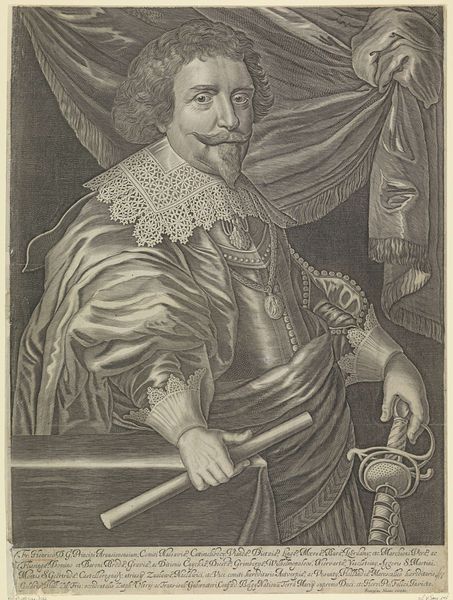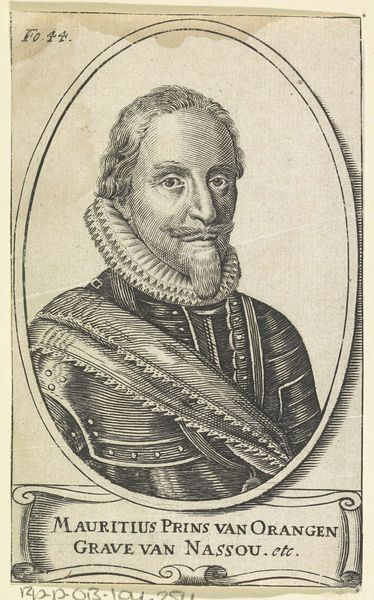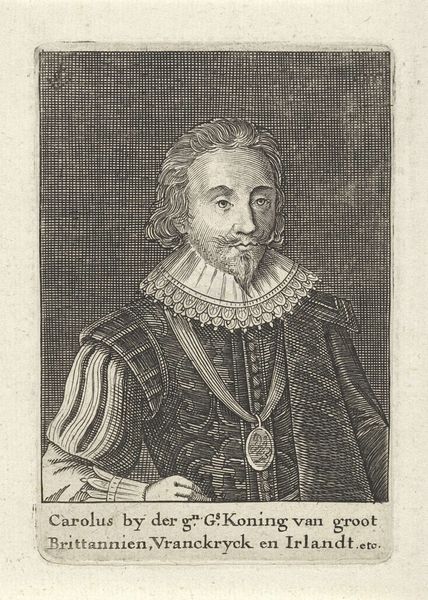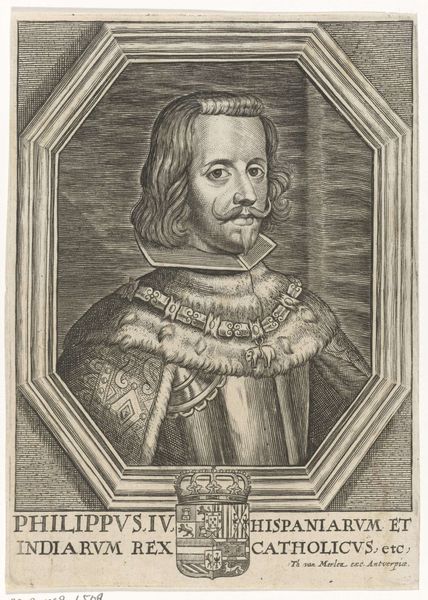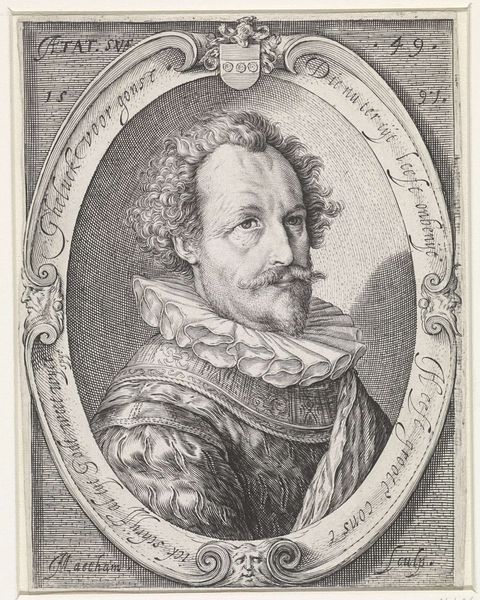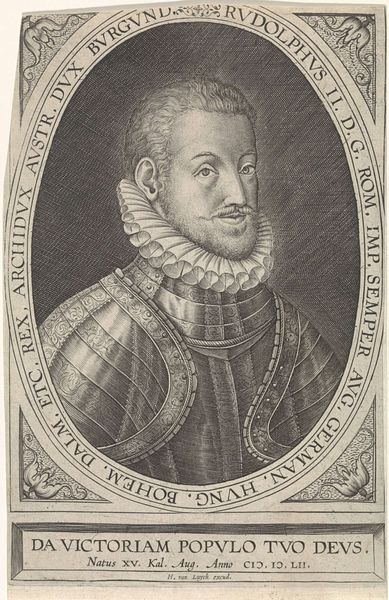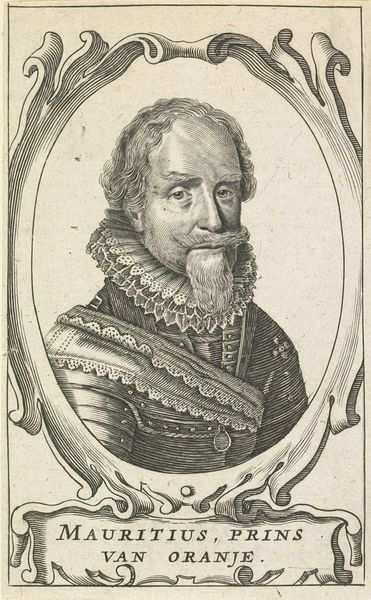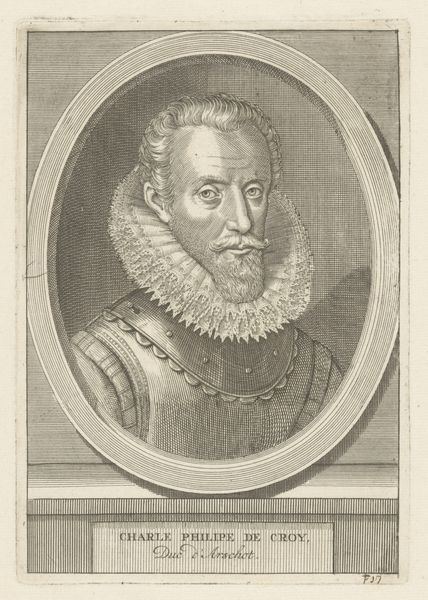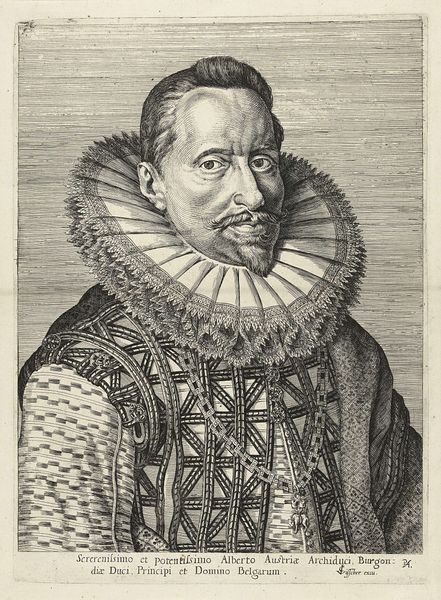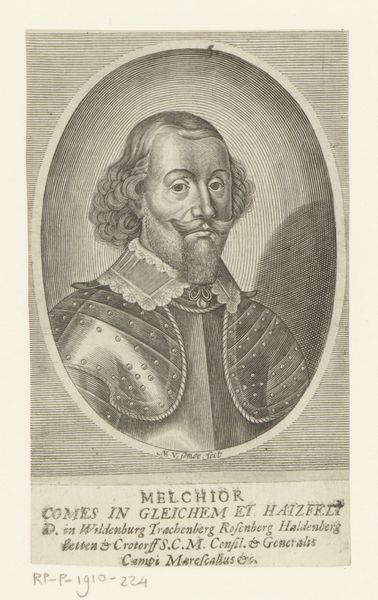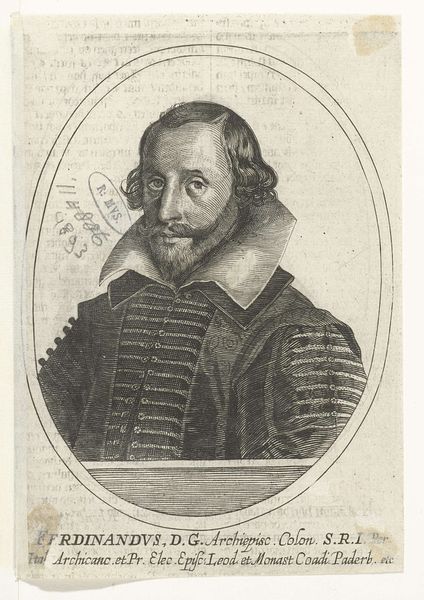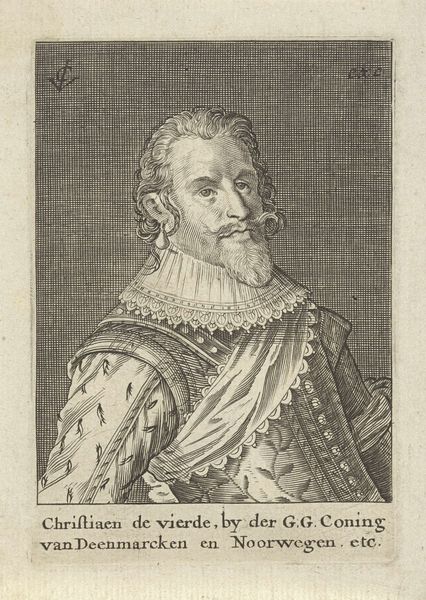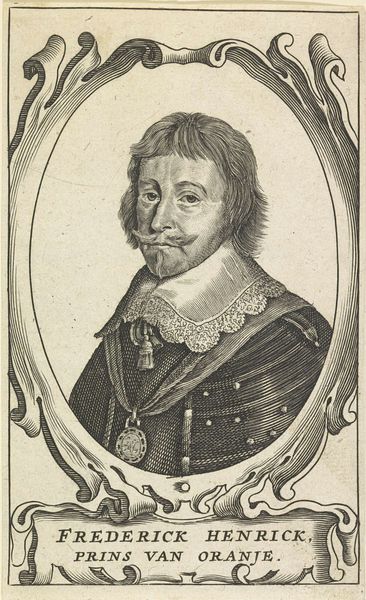
print, engraving
#
portrait
#
baroque
#
dutch-golden-age
# print
#
old engraving style
#
portrait reference
#
portrait drawing
#
history-painting
#
engraving
Dimensions: height 435 mm, width 303 mm
Copyright: Rijks Museum: Open Domain
Curator: Oh, what a study in contrasts. It feels so stern, yet oddly playful with all that lace. Editor: I see that! And this engraving by Johannes Eillarts, created sometime between 1600 and 1650, presents Frederik Hendrik, Prince of Orange. It really does embody the style of Dutch Golden Age portraiture, doesn’t it? Curator: Indeed. He's all authority, encased in ornate armor, a symbol itself of power and protection. The billowing feathers and intricate lace soften the effect a bit, giving him an air of accessible nobility rather than pure warlord. It reminds me of symbols found on Byzantine coins, but much more ornate and stylized to evoke contemporary emotion. Editor: Exactly. Those swirling patterns etched onto the armor almost make him seem…well, like he's part of the decoration! Not as a criticism, but more an observation about the image doing something rather interesting in flattening out hierarchy and making people and objects part of the overall tableau of life. Curator: A fascinating point. It echoes the Baroque era's tendency toward intricate detail and emotional appeal, engaging the viewer on both an intellectual and emotional level. His slight smile even invites confidence, perhaps a strategy of imbuing power by presenting it as humane. Editor: Though it’s monochrome, one can imagine how the light must have played on that gleaming metal. You know, something strikes me - despite all this heavy ornamentation, there’s something surprisingly…lightweight about it. Perhaps the thin, precise lines of the engraving itself contribute. Curator: And remember, prints like these disseminated images of power and influence, establishing enduring visual representations. It ensured those images would take hold in the imagination of their publics. Editor: So true. This piece speaks volumes not only about Prince Frederik Hendrik but also about the careful crafting of image, legacy, and the emotional power of visual rhetoric during that time. It gives pause to ponder the human drive to be seen as beautiful and powerful, doesn't it? Curator: It certainly does. In essence, it stands as a testament to image making—both as historical documentation and artful presentation. Editor: Couldn't have said it better myself. It makes one consider, even now, the ways we craft ourselves for others.
Comments
No comments
Be the first to comment and join the conversation on the ultimate creative platform.
